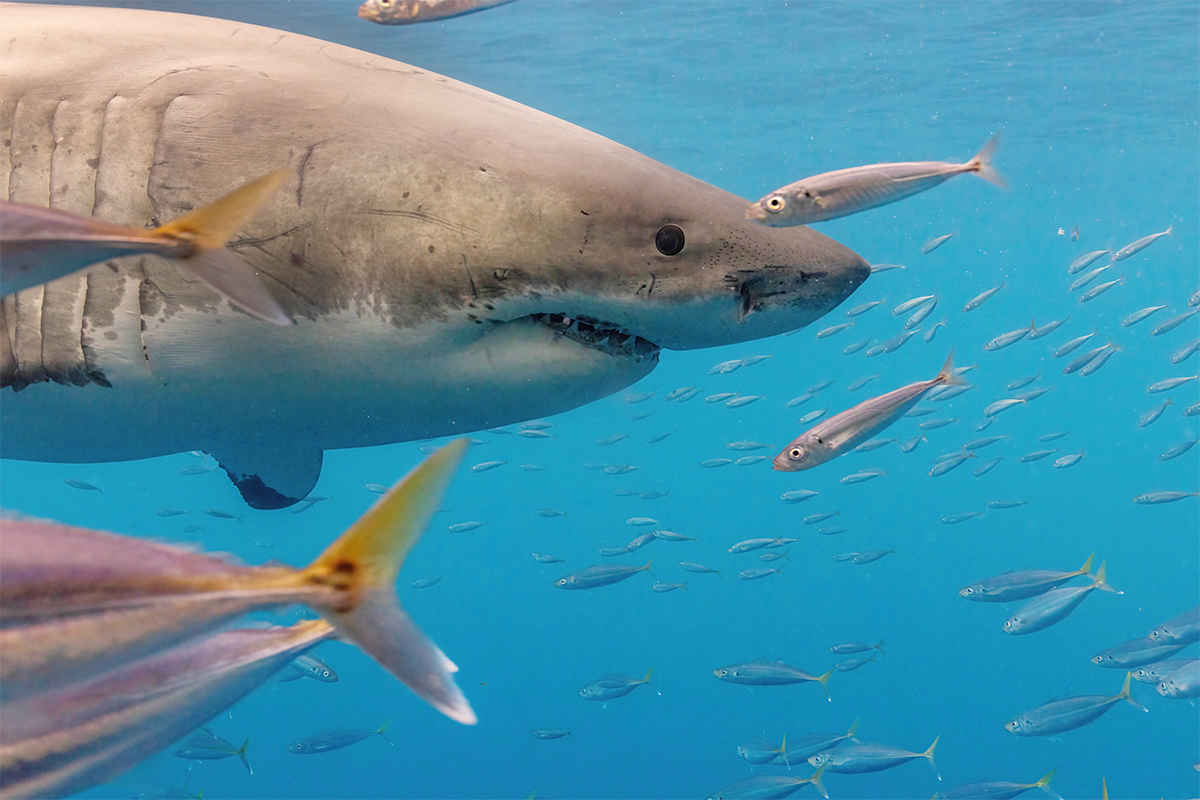Prime Time With the Great Whites
Tomas Koeck uses the 35mm F/1.4 prime lens to document the sharks of Guadalupe Island.
Share the article:
More Photo Tips | Video Gallery | Photo Gallery | Enewsletter sign-up
By Jenn Gidman
Images by Tomas Koeck
The last time Tamron spoke with Tomas Koeck he was shivering in Minnesota as he captured footage of the native gray great owl for his documentary on the North American boreal forest. We caught up with the Sacred Heart grad student, filmmaker, photographer, and conservationist once more, this time to chat about his latest journey to the waters off Guadalupe Island, in Mexico’s Baja California, where he photographed and shot footage of great white sharks with his Tamron 35mm F/1.4 Di USD prime lens.
Tell us about the larger project that the shark imagery was part of.
That larger project was a short, Tamron-supported film called Keepers of the Blue, a collaboration with the Atlantic Shark Institute, the National Audubon Society, and the Connecticut Audubon Society that examined several different oceanic environments and the marine creatures in it. I traveled all over the country to capture pictures and footage for that, featuring various seabirds, crabs, humpback whales, seals, Maine lobster, and different types of sharks, including mako and the great whites.
The inspiration to do this film stretches back to my childhood, when we’d often go snorkeling as a family and I became obsessed with sharks. Fast forward to last year, when I was already working on projects with groups like PBS Nature and Smithsonian Channel. I thought: Why not put together my own aquatic-themed documentary in which I explore the ecological scenarios underlying how these different sea creatures, including sharks, live?
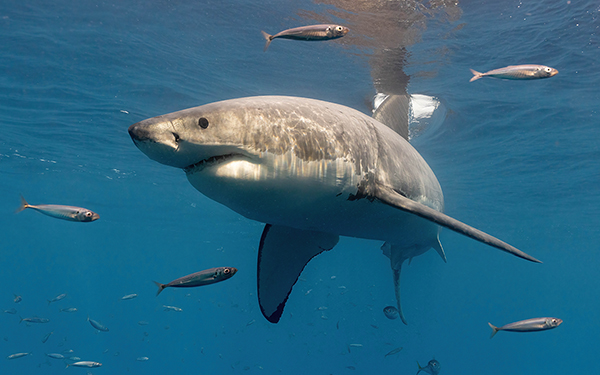
SP 35mm, f/10, 1/1600 sec., ISO 5000
Click image to view larger
Talk about the expedition to Mexico.
Guadalupe Island is a volcanic island off the west coast of Mexico, and it serves as a stopping point for great white sharks swimming from California to Hawaii due to its distance from the coast, which makes it an area with steady food access for the sharks.
The trip isn’t for the faint of heart. We flew from New York City to San Diego, then hired a van to take us down to Ensenada, Mexico. Then came the nearly 24-hour boat ride to the island, which we never technically landed on. The boat was out there for several days, so we didn’t see land for about a week.
What Tamron lenses were essential for this trip?
I brought my Tamron SP 70-200mm F/2.8 VC G2 telephoto and SP 150-600mm VC G2 ultra-telephoto lenses for interviews and landscape shots when I was on the boat, but the main lens I used for my underwater work was the SP 35mm F/1.4 Di USD prime lens. For me, 35mm is the sweet spot for filming large underwater animals. A lot of these sharks are between 15 and 16 feet long, and sometimes they’re swimming right next to you; other times they back off a little. I didn’t want to be too tight on the sharks, but I also didn’t want to be too far away so that the bars of the cage I was in were showing. If I’d been shooting at, say, 15mm, that wouldn’t have been conducive to what I was trying to do. The 35mm offered me the perspective I was looking for, and all of my images came out razor sharp—I’ve created many amazing prints from these files, and all of the 4K footage is equally impressive.
What was your photographic goal for your shark sessions?
I wanted to capture footage of great whites simply swimming around and doing what they usually do. The image we’re often presented, in the media and in movies, is of these powerful, charismatic creatures opening their jaws wide and chomping down on things. Peter Benchley, who wrote the novel Jaws, later on said he regretted contributing to that frightening perception. We should be cautious of sharks and respect their size and power, but for the most part, they’re totally relaxed when they’re on their own, not hurting anyone.
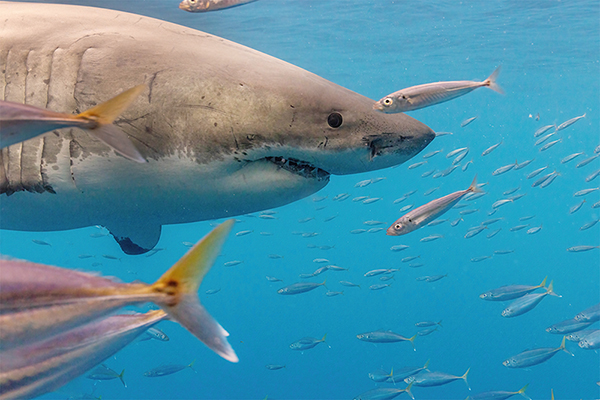
Click image to view larger
I wanted to portray them much as they are, which is essentially really big fish. I wanted to film their scars, film their eyes. Most people think sharks just have these inky black eyes, but there’s actually a pupil in there that’s staring back at you if you get up close. It’s a side that not many people are exposed to, and that’s what I wanted to show.
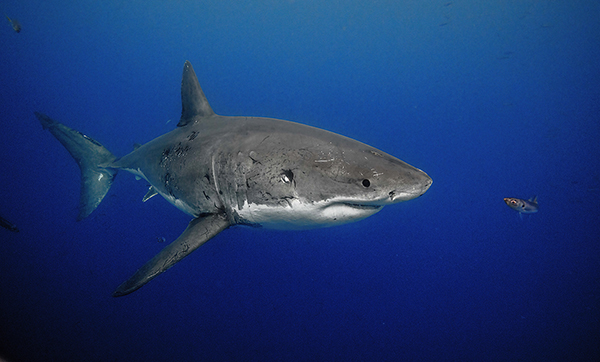
Click image to view larger
What was the lighting like while you were filming?
Going underwater changes everything. All the rules you're used to aboveground are basically out the window. I was shooting at smaller apertures like F/8 or F/11, but my Tamron lenses ensured that my footage still came out nice and sharp. Sometimes on a cloudy day it would get superdark, however, and I’d have to wait until the sun broke out again and those beams of light pierced the water.
I tried not to dip below 1/500 of a second. My ISO, meanwhile, was through the roof, because of those F/8 and F/11 apertures I was shooting at. Fortunately, because of the great software that’s available now, I'm able to take away any noise that's too distracting, so my files were pretty much ready to print out and hang on the wall.
What do you think accounted for helping to keep your images so sharp?
My camera’s autofocus working with this 35mm Tamron lens made it easy to focus on anything. It’s like the lens just knew how to communicate perfectly with my camera. It’s worth it to note that I was shooting with a Canon mirrorless camera, but I was using Tamron glass adapted for EF mount for DSLRs. The fact that it was working as well as a mirrorless-designed lens shows that people shouldn’t shy away from getting an adapter, as long as it’s a decent one. I also made sure I shot at superhigh frame rates, like around 120 frames per second.
Talk about the ethics of carrying out such a shoot.
This is important to me. In wildlife photography and videography, there’s a constant debate about shark baiting, which is basically placing bloody chunks of fish in the water to attract the sharks. I made sure to go out with individuals who were responsible with their chumming. They use a technique called wrangling, meaning they’d throw out the hunk of meat but then pull it back once the shark arrives so it can’t actually eat it—the point being, you don’t want to effect a change in the shark’s overall behavior.
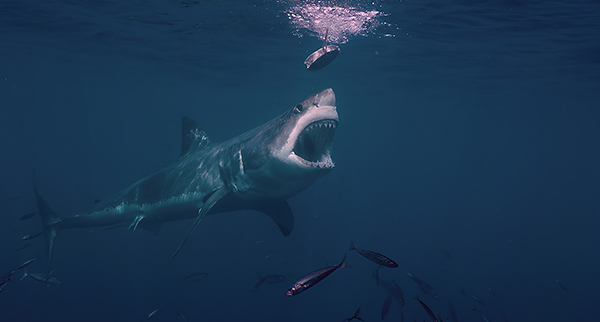
Click image to view larger
And even this type of thing I only do in limited situations. It’s a constant tug of war between “should we be doing this at all?” and “we need to study shark behavior to educate the public.” If you surround yourself with people who are just as concerned as you are about disturbing the sharks as little as possible, and on mitigating the risks, then that’s how you want to do it.
How did it feel being one with the sharks?
It was absolutely unreal. That love of sharks I had as a kid all came flooding back. Sacred Heart even wrote a cover story on me for their magazine after I made the film and included a drawing I made of sharks when I was in first grade. To be able to see the great whites up close and personal was wild.
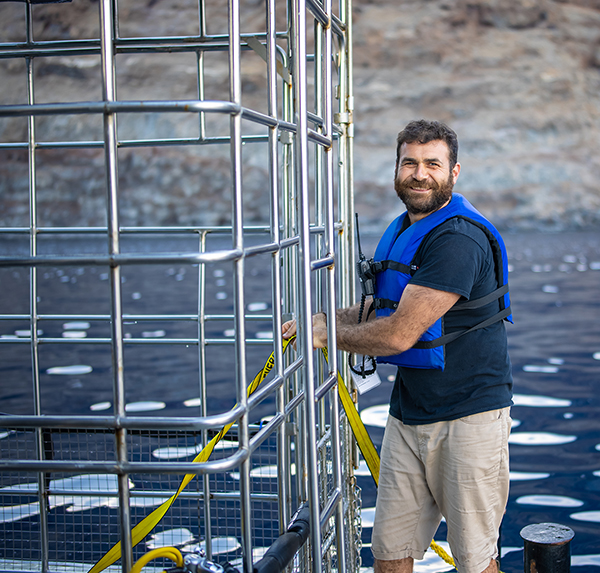
SP 35mm, f/1.4, 1/320 sec., ISO 100
Click image to view larger
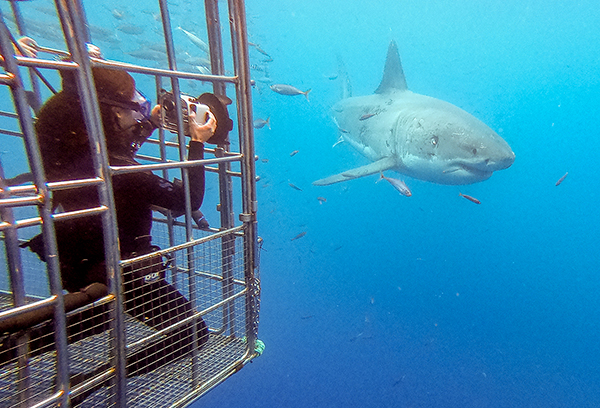
GoPro, HERO7
Image by Eric Torrens
Click image to view larger
As for Keepers of the Blue, it was released in April in select theaters around Connecticut. Since then, it’s gone on to several film festivals, including the Wildlife Conservation Film Festival. Meeting the scientists and conservationists during the making of the film was my greatest takeaway. It’s been amazing to gather with people who are just as passionate about animals, and at preserving their way of life, as I am.
To see more of Tomas Koeck’s images, check out his website and his Instagram.
More Photo Tips | Watch Videos | Learn More About Tamron Lenses | Photo Gallery
